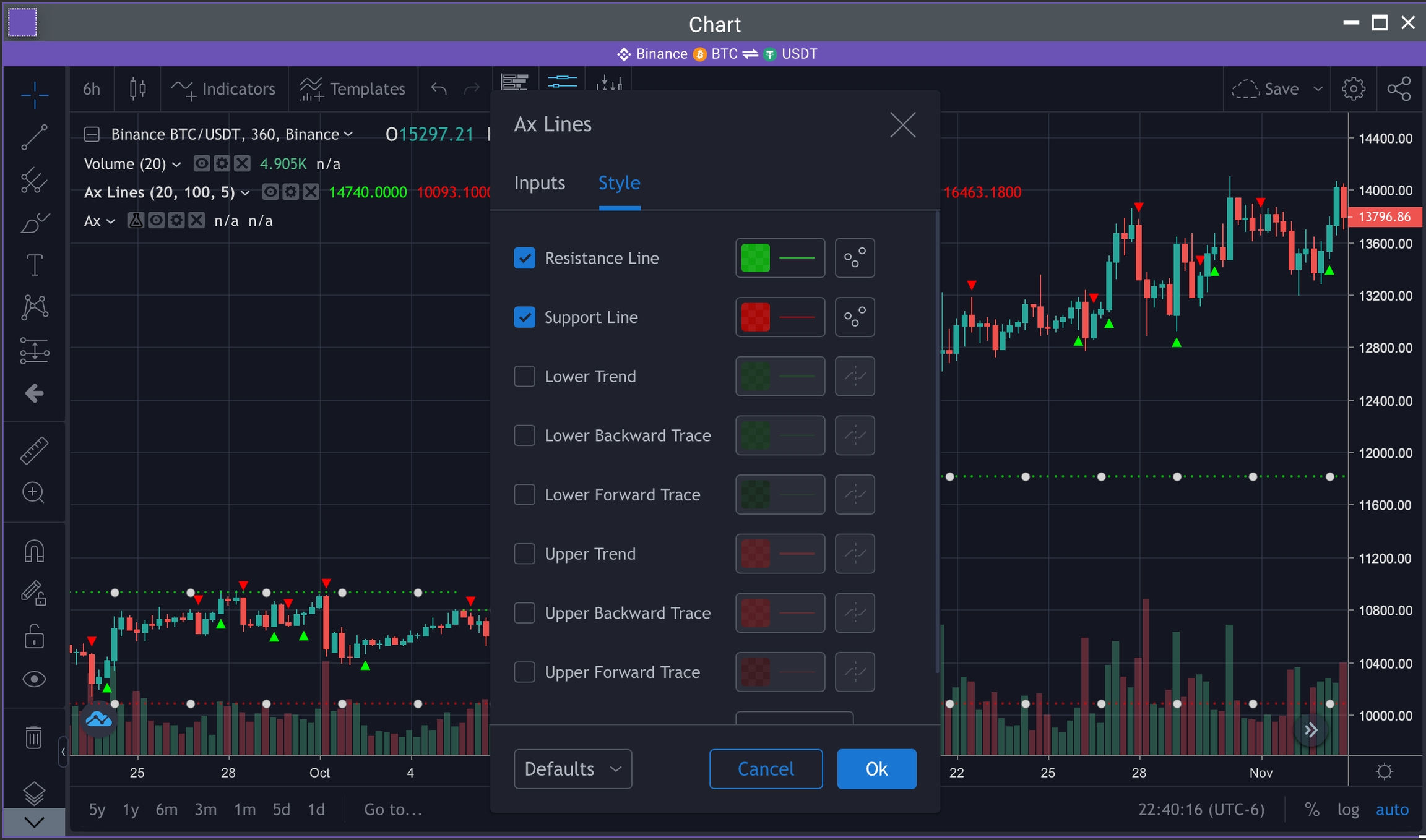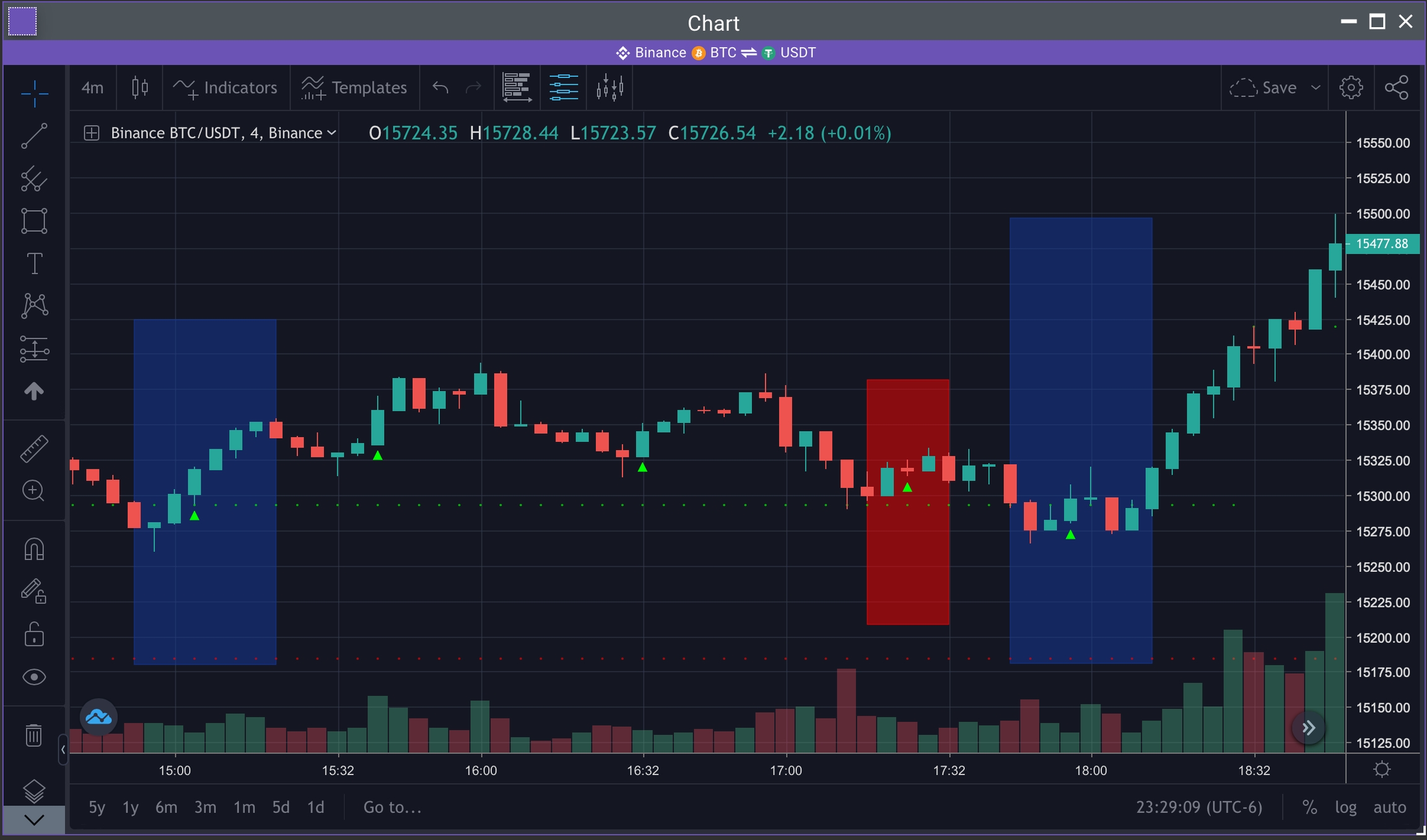Bounces Strategy
As before, if you haven't read part 1 and part 2; go back and read them.
Let's recap what we have learned:
What the indicator is
Utilizing higher intervals for lower interval movements
How the indicator triggers
Why open triggers are important
In the next section, we will go over how to use the indicator on the lower intervals. This is honestly the most exciting and riskiest part of trading. We do trade on the higher intervals a lot, but lower interval trading can also be exciting but significantly risky. That is why we saved this article for later.
Lower interval trading, or intraday trading, takes a lot more skill. If you haven't been trading for long, just stick to 1 day and 1 week (interday) for now, but follow along so you can learn. It can be really difficult to beat interday trading, but you can slowly learn how to do it.
There are several reasons to use margin/leverage on the lower intervals. One reason is that the movements can be much smaller. The price will not rise 10% like on higher intervals. Lower interval movements can be as small as .1%. This is called scalping, and that's exactly what we'll discuss.
Aurox Lines
I'm going to try to keep this section short. One of the indicators we have developed is the Aurox Lines indicator. It basically draws trend, support, and resistance lines. If you already know how to draw these lines, you don't have to use this indicator. You can draw your own support and resistance lines. But if you don't, this indicator will be extremely important for the rest of this article.
Although trend lines can be important, we're actually going to turn them off. To do so, add the indicator to the chart, click the settings and simply uncheck the trend lines.

Even though these are labeled as lines, they are rather "areas". If we have support at $10,000, that doesn't mean that if the price goes to $9,999 the support has been broken. It can drop a bit below the support/resistance area and then rebound, this is normal. In addition, old supports can become future resistance areas and vice versa.
We can make a lot of educated trades by combining S/R lines with the Aurox indicator to find bounces. These bounces cause price instability, and that could be our queue to take action. We want unstable and volatile changes.
Keep in mind I'm only going to be discussing long entries. The same can apply to shorts but you just have to be extremely careful, as it becomes much riskier. Not only can you get liquidated quickly with 1 mistake, but it's much more stressful in general.
Bounces
Let me give you an example of how this works, and we'll then discuss it. Pay attention to the blue highlighted areas. We'll be using the 4-minute chart and this is actually from today (Nov 11th).

If you look, there is a green dotted line which is denoted by the S/R line. What we're looking for are clear bounces on this line.
When the price approaches our S/R line, we notice that either during the bounce or shortly after the bounce we triggered a green long arrow. What this tells us is instead of the price breaking through this area and going down, it's going to bounce and go up. This bounce can be small, as shown in the first blue rectangle, or it can be fairly large, as shown in the second.
These triggers can happen 10-20+ a day. If you're trading on lower intervals, make sure to manage your risk properly. Price can change very very quickly.
You also need to make sure you do not jump the gun. The price needs to either hit the area or even go below it. If you look at the red highlighted rectangle, the price almost touched the green dotted line. Taking that trade would have been a slight mistake. Just wait and be patient!
Your Homework
Whether you're a beginner or advanced user, pull up the chart as we showed you, and follow along. Just watch the bounces. Don't even trade, just watch and learn. After you've gotten comfortable, try using testnet.
Last updated